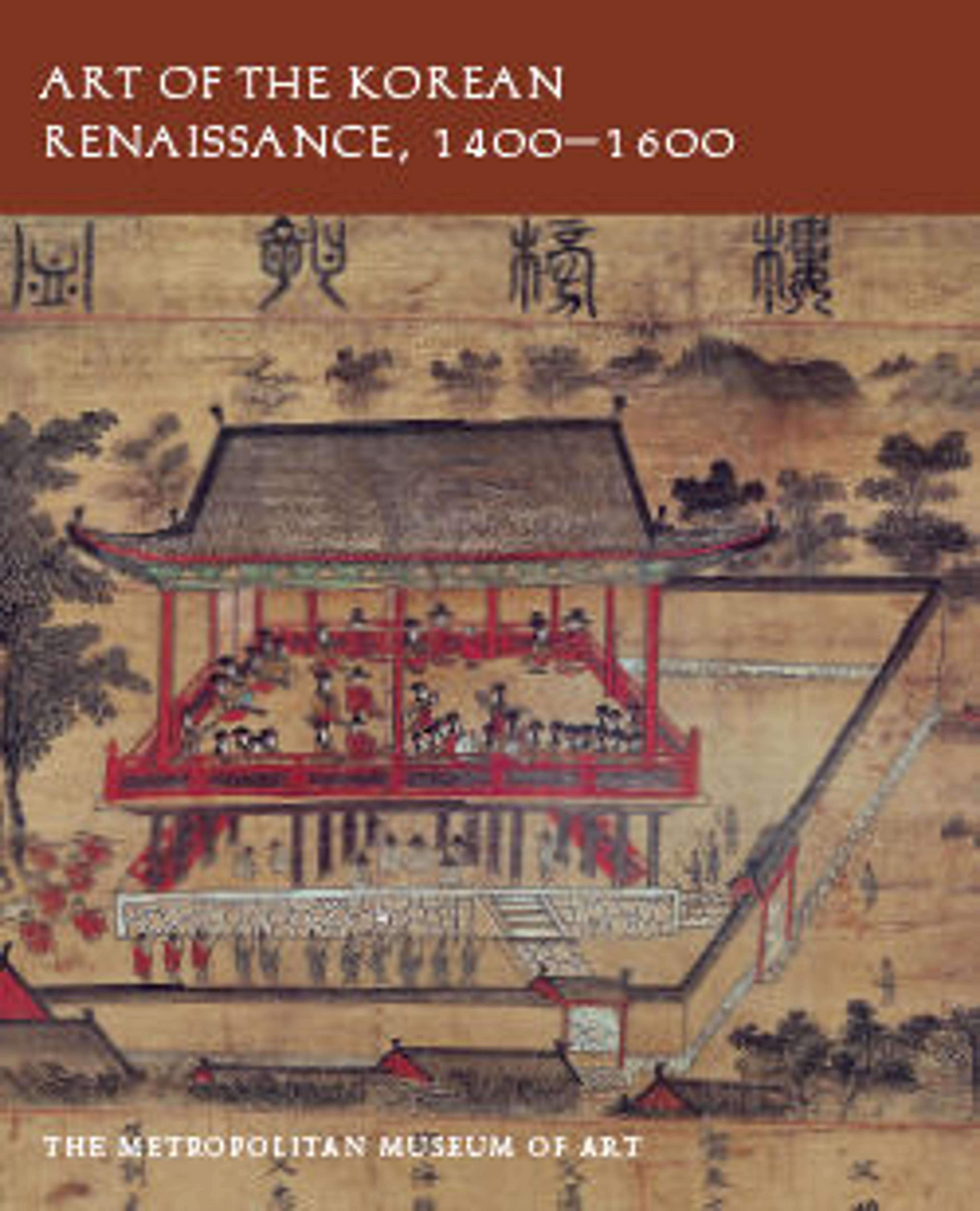Evening bell from mist-shrouded temple (left); Autumn moon over Lake Dongting (right)
해질녘 산사의 종소리 조선
煙寺暮鍾圖 朝鮮
Evening Bell from Mist-Shrouded Temple (left); Autumn Moon over Lake Dongting (right)
Joseon dynasty (1392–1910), late 15th–early 16th century
Hanging scroll; ink on silk
Purchase, Joseph Pulitzer Bequest, and Mr. and Mrs. Frederick P. Rose and John B.
Elliott Gifts, 1987 (1987.278a)
This pair of scrolls was most likely part of a set of eight depicting the famed scenery around china's Xiao and Xiang Rivers. Landscape paintings illustrating sites in China known from classical literature—places that often had nostalgic associations—flourished in the early Joseon period even as their number and reputation dwindled in contemporary Ming dynasty (1368–1644) China.
Although these scrolls are unsigned, the artist clearly aligned himself with the recognizable style of the fifteenth-centure master An Gyeon. the left scroll represents a mountain valley with a large Buddhist temple complex veiled in mist. The same mood of melancholy and contemplation infuses the cloud-covered mountain and cold, glistening light in the right painting. Despite the title, the moon is absent from the scene, which is notable but not without precedent.
煙寺暮鍾圖 朝鮮
Evening Bell from Mist-Shrouded Temple (left); Autumn Moon over Lake Dongting (right)
Joseon dynasty (1392–1910), late 15th–early 16th century
Hanging scroll; ink on silk
Purchase, Joseph Pulitzer Bequest, and Mr. and Mrs. Frederick P. Rose and John B.
Elliott Gifts, 1987 (1987.278a)
This pair of scrolls was most likely part of a set of eight depicting the famed scenery around china's Xiao and Xiang Rivers. Landscape paintings illustrating sites in China known from classical literature—places that often had nostalgic associations—flourished in the early Joseon period even as their number and reputation dwindled in contemporary Ming dynasty (1368–1644) China.
Although these scrolls are unsigned, the artist clearly aligned himself with the recognizable style of the fifteenth-centure master An Gyeon. the left scroll represents a mountain valley with a large Buddhist temple complex veiled in mist. The same mood of melancholy and contemplation infuses the cloud-covered mountain and cold, glistening light in the right painting. Despite the title, the moon is absent from the scene, which is notable but not without precedent.
Artwork Details
- 해질녘 산사의 종소리 조선
- 煙寺暮鍾圖 朝鮮
- Title:Evening bell from mist-shrouded temple (left); Autumn moon over Lake Dongting (right)
- Artist:Style of An Gyeon (Korean)
- Period:Joseon dynasty (1392–1910)
- Date:ca. 1450–1500
- Culture:Korea
- Medium:Pair of hanging scrolls; ink on silk
- Dimensions:Image (each): 35 3/8 x 17 7/8 in. (89.9 x 45.4 cm)
Overall with mounting (each): 78 1/4 x 24 in. (198.8 x 61 cm)
Overall with knobs (each): 78 1/4 x 27 7/8 in. (198.8 x 70.8 cm) - Classification:Paintings
- Credit Line:Purchase, Joseph Pulitzer Bequest, and Mr. and Mrs. Frederick P. Rose and John B. Elliott Gifts, 1987
- Object Number:1987.278a, b
- Curatorial Department: Asian Art
Audio
7708. Evening Bell from Mist-Shrouded Temple (left); Autumn Moon over Lake Dongting (right)
0:00
0:00
We're sorry, the transcript for this audio track is not available at this time. Please email info@metmuseum.org to request a transcript for this track.
More Artwork
Research Resources
The Met provides unparalleled resources for research and welcomes an international community of students and scholars. The Met's Open Access API is where creators and researchers can connect to the The Met collection. Open Access data and public domain images are available for unrestricted commercial and noncommercial use without permission or fee.
To request images under copyright and other restrictions, please use this Image Request form.
Feedback
We continue to research and examine historical and cultural context for objects in The Met collection. If you have comments or questions about this object record, please contact us using the form below. The Museum looks forward to receiving your comments.
